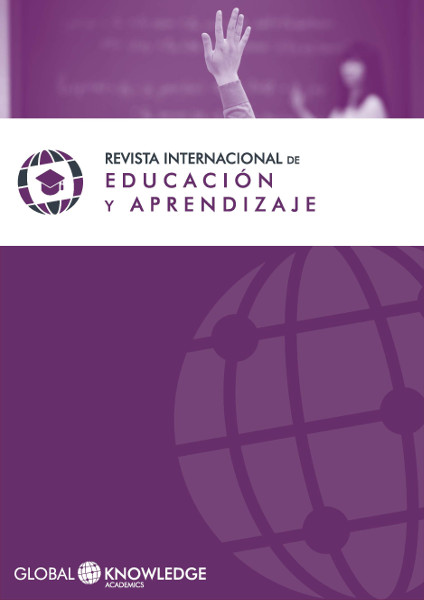Design and Validation of the Questionnaire about School Coexistence, Sexual Diversity and Gender Stereotypes
DOI:
https://doi.org/10.37467/gka-revedu.v7.2158Keywords:
Questionnaire, Sexual, Diversity, Gender Stereotypes, Bullying, FamiliesAbstract
Families have an essential power in the personal development of their children: education. The aim of this article is creation of an instrument that allows measuring perceptions about school coexistence, sexual diversity and gender stereotypes of families the pre-school students, primary education and secondary education. The study presents the phases for the design: 1st) Review of the literature, 2nd) Design and production of the
questionnaire and 3rd) Validation. The results show that the CEDAG questionnaire has obtained a Kuder Richardson coefficient of 0.71, a value that demonstrates the internal consistency, as well as its validity and reliability for its implementation.
Downloads
Global Statistics ℹ️
|
649
Views
|
612
Downloads
|
|
1261
Total
|
|
References
Azqueta, L. (2014). Manual para alumno y alumna Educar en la diversidad afectivo-sexual desde la familia. Cómo educar a favor de la igualdad de valor y contra la violencia por motivos de orientación sexual e identidad de género. Madrid: CEAPA.
Cabrera, M. (2009). La importancia de la colaboración familia-escuela en la educación. Revista Digital Innovación e Experiencias Educativas, (16).
Caricote, E. (2006). Influencia de los estereotipos de género en la salud sexual en la adolescencia. Educere, 10 (34), 463-470.
Caricote, E. (2008). Influencia de los padres en la educación sexual de los adolescentes. Educere, 12(40).
Colás P. y Contreras, J. A. (2013). La participación de las familias en los centros de Educación Primaria. Revista de Investigación Educativa, 31(2). DOI: https://doi.org/10.6018/rie.31.2.171031
Cortina, J.M. (1993). What is coefficient alpha? An examination of theory and applications. DOI: https://doi.org/10.1037/0021-9010.78.1.98
Journal of Applied Psychology (78), 98-104.
Díaz, S., y Parejo, J. L. (2013). La promoción de la igualdad y el respeto de la diversidad afectivo- sexual: bases de un programa de orientación y tutoría para Educación Secundaria. Universidad de Valladolid.
Francisco, A., y Moliner, L. (2011). Porque la visibilidad importa: una propuesta para trabajar la diversidad sexual en la ESO a través de la educación en medios. Revista educación inclusiva, 4 (2), 149-160.
García, X., Pérez, A. y Nebot, M. (2010). Factores relacionados con el acoso escolar (bullying) en los adolescentes de Barcelona. Gaceta Sanitaria, 24(2), 103-108. DOI: https://doi.org/10.1016/j.gaceta.2009.09.017
Kuder, G. F., y Richardson, M. W. (1937). The theory of the estimation of test reliability. Psychometrika, 2(3), 151-160. DOI: https://doi.org/10.1007/BF02288391
Lawshe, C. H. (1975). A quantitative approach to content validity. Personnel psychology, 28(4), pp. DOI: https://doi.org/10.1111/j.1744-6570.1975.tb01393.x
-575
López, E. (2018). El método Delphi en la investigación actual en educación: una revisión teórica y metodológica. Educación XX1, 21(1), 17-40. DOI: https://doi.org/10.5944/educxx1.20169
Moreno, E. (2013). Análisis de la influencia de la familia en los hábitos lectores de sus hijas e hijos: un estudio etnográfico. Contextos Educativos. Revista de Educación, (4), 177-196.
Olweus, D. (1993). Acoso escolar, “bullying”, en las escuelas: hechos e intervenciones. Centro de investigación para la Promoción de la Salud, Universidad de Bergen, Noruega, 2.
Ortega, R., y Mora, J. A. (2008). Las redes de iguales y el fenómeno del acoso escolar: explorando el esquema dominio-sumisión. Infancia y aprendizaje, 31(4), 515-528. DOI: https://doi.org/10.1174/021037008786140922
Maestre, A. B. (2009). Familia y escuela los pilares de la educación. Revista Innovación y experiencias educativas, 14.
Mirabilia, P. y Guixé, M. (2018). Feminismo y LGTB+ ¡Imparables! Barcelona: Astronave.
Penna, M. (2012). Formación del profesorado en la atención a la diversidad afectivo-sexual (Tesis doctoral) Universidad Complutense de Madrid, Madrid. Recuperado de: http://eprints.ucm.es/16718/1/T34011.pdf
Pichardo, J., De Stéfano, M., Sánchez M., Puche, L., Molinuevo, B., y Moreno, O. (2013). Diversidad sexual y convivencia: Una oportunidad educativa. Madrid: Universidad Complutense Madrid.
Pinos, V., y Pinos, G. (2011). Actitudes de los adolescentes escolarizados de Cuenca hacia la diversidad sexual. Maskana, 2(1), 1-16. DOI: https://doi.org/10.18537/mskn.02.01.01
Torío, S. (2004). Familia, escuela y sociedad. Aula Abierta, 83.
Venegas, M. (2011). El modelo actual de educación afectivosexual en España. Revista Iberoamericana de Educación, 55(3), 4. DOI: https://doi.org/10.35362/rie5531592
Venegas, M (2013). La educación afectivosexual en el marco de la educación para la ciudadanía democrática y los derechos humanos. Revista de la Asociación de Sociología de la Educación (RASE), 6(3), 408-425.
Downloads
Published
How to Cite
Issue
Section
License
Those authors who publish in this journal accept the following terms:
-
Authors retain copyright.
-
Authors transfer to the journal the right of first publication. The journal also owns the publishing rights.
-
All published contents are governed by an Attribution-NoDerivatives 4.0 International License.
Access the informative version and legal text of the license. By virtue of this, third parties are allowed to use what is published as long as they mention the authorship of the work and the first publication in this journal. If you transform the material, you may not distribute the modified work. -
Authors may make other independent and additional contractual arrangements for non-exclusive distribution of the version of the article published in this journal (e.g., inclusion in an institutional repository or publication in a book) as long as they clearly indicate that the work was first published in this journal.
- Authors are allowed and recommended to publish their work on the Internet (for example on institutional and personal websites), following the publication of, and referencing the journal, as this could lead to constructive exchanges and a more extensive and quick circulation of published works (see The Effect of Open Access).













